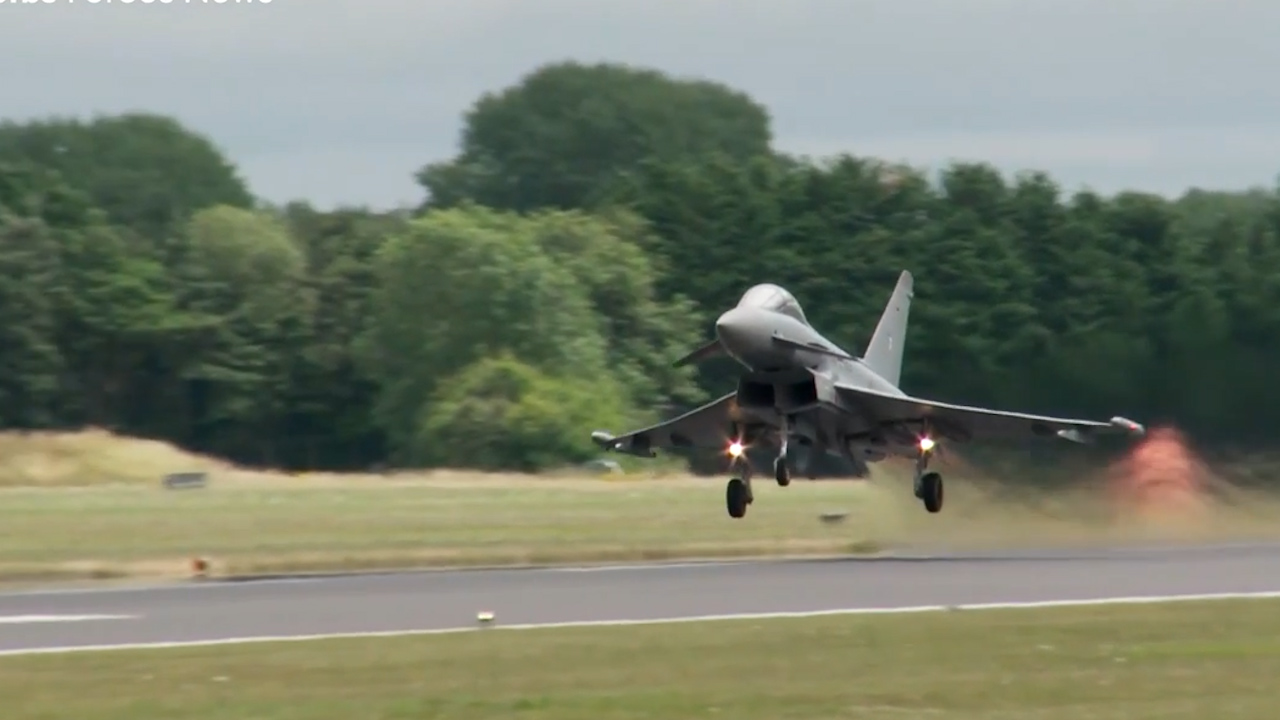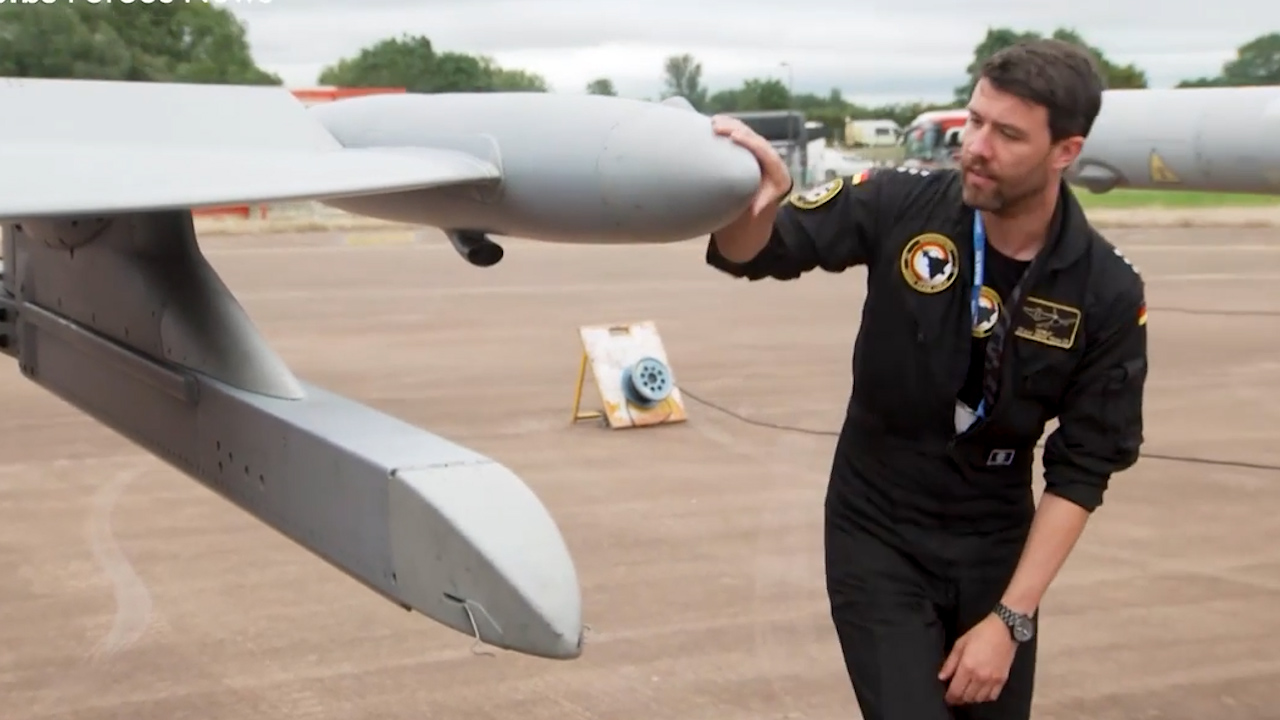Feeling the fear: German air force display pilot on moments of trepidation in the skies
In military aviation, pilots are often seen as unflinching, their rigorous training giving them nerves steeled against any threat.
But beneath the cool, composed exterior, even these daring aviators experience moments of trepidation.
A German Air Force captain, with the callsign 'Noble', has provided a glimpse into this reality during an interview about his experiences flying the Typhoon in air displays.
- RAF making 'baby steps' in using sustainable fuel to solely power its fighter jets
- RAF completes successful air policing mission in Romania without any live scrambles
- RAF squadron's 'offensive' Crusaders nickname dropped after service complaint
Captain 'Noble', a seasoned pilot, describes the meticulous process leading up to take-off, saying: "You think about the last steps you have to do. Meaning, is your system working full up?
"I'm checking the system in the aircraft. I'm having a quick glance for the weather."

This thorough pre-flight ritual is crucial, especially when dealing with rapidly changing weather conditions.
"You get the weather, but obviously the weather changes really fast here." So assessing the clouds just before take-off is crucial.
Once the engines roar to life, there's no time for second-guessing. The adrenaline surges as Captain 'Noble' runs up the engines and takes off.
Yet, he remains acutely aware of his body and the aircraft's performance. "For the first pull up, I’m using high Gs, so I know my body and my system is working full," he notes.
The synchronisation between man and machine is vital, and when the weather is favourable, the pilot says it feels it feels "incredible".
"The aircraft is amazing. The power is amazing. What you can do with the aircraft, with the flight control system, it's really, really powerful."
However, this power and precision do not eliminate the presence of fear. In fact, it's in the face of challenging and unexpected situations when fear becomes a stark reality.
Captain 'Noble' recounts a particularly harrowing experience at an airshow in Poland.
"We had an airshow in Poland where the runway was fully flooded after take-off," he recalls.

The Typhoon's braking system struggles on a waterlogged runway. "If you don't hit the ground hard enough... you're not going to break the water between the tyres and the surface of the runway. And so it's just sliding down the runway, had no chance to break."
The pilot was forced to take off again and execute a carrier landing.
This would involve adapting carrier landing techniques, such as precision and controlled speed, to a standard runway environment.
Reflecting on the incident, he admits: "That was... Okay, now I'm really, really scared."
During Captain Nobel's moment of vulnerability, it wasn't the aircraft or the manoeuvres that instilled fear, but the unpredictable elements and the responsibility of ensuring safety.
"Absolutely," he responds when asked if there are times he might decide not to fly.
"So the pilot is responsible ... So everything must be safe. Must be safe for the crowd. It must be safe for the aircraft and the pilot, at least. So, there are things where I say, okay, I'm not going to do this, for example, if the clouds are pressing down."
And while flying can be thrilling, it's not without its nerve-wracking moments.
Whether it's dealing with a flooded runway or making split-second decisions during a high-stakes manoeuvre, even experienced pilots like Captain 'Noble' face situations that test their composure.
Behind the impressive displays and powerful aircraft lies a human element – one that involves balancing thrill and fear with a blend of risk management and skill.









